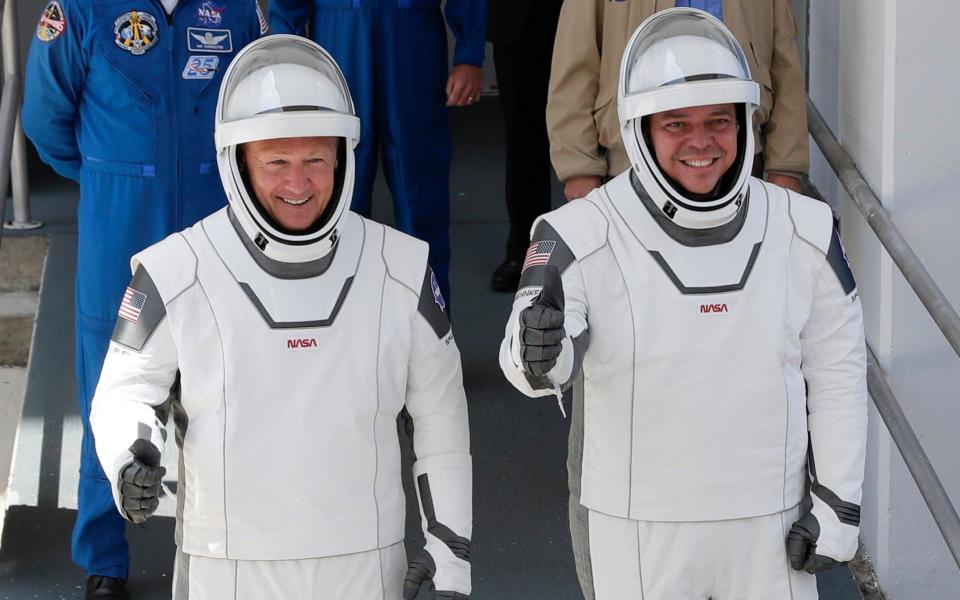SpaceX's Crew Dragon capsule splashes down off Florida coast

Two Nasa astronauts safely made the first splashdown return to earth in 45 years when their capsule landed in the Gulf of Mexico.
Doug Hurley and Bob Behnken landed their Crew Dragon spacecraft off the coast of Pensacola, Florida shortly before 3pm local time (8 pm UK).
The astronauts said that "all was well" on board the craft after the splashdown.
"On behalf of the SpaceX and NASA teams, welcome back to Planet Earth. Thanks for flying SpaceX," SpaceX mission control said upon splashdown.
They had chosen the location because of the potential threat posed by Hurricane Isaias in the Atlantic.
Astronauts last made an ocean landing in July 1975 as part of the Apollo mission.

The splashdown was their final step in a mission intended to test SpaceX’s human spaceflight system, examining its launch, docking and recovery operations.
It was also the culmination of the first mission in which a commercial spacecraft was used to take astronauts to the space station.
SpaceX, founded by Elon Musk, and Boeing had been rivals to carry out the first private mission to take astronauts to the space station.
NASA, aiming to galvanize a commercial space marketplace, awarded nearly $8 billion to SpaceX and Boeing collectively in 2014 to develop dueling space capsules, experimenting with a contract model that allows the space agency to buy astronaut seats from the two companies.
Washington had been searching for a commercial company to take on the work, rather than relying on the Russians to provide run the ferry service after Nasa’s own Space Shuttle ceased operation in July 2011.
The astronauts bade farewell to their colleagues on the International Space Station when their Dragon Endeavour spacecraft undocked at 7:35 pm Eastern Standard Time (00:35 GMT) on Saturday evening.

During their 21-hour voyage back to Earth, the two men were able to hear pre-recorded messages from their children.
"Good morning Dragon Endeavor," Hurley's son said in a recorded message sent to the capsule. "I'm happy you went into space but I'm even happier that you're coming back home."
As the astronauts re-entered the atmosphere, they were travelling at nearly 17,500 miles per hour, but had to slow to just 15 miler per hour to make the landing.
Their mission, Demo-2 which started on May 30, was the first time that Nasa had launched astronauts from US soil in nine years.
The mission was originally scheduled to last one week, but was extended to 60 days in order to keep the International Space Station operating at full capacity.
"Great to have NASA Astronauts return to Earth after very successful two month mission," President Donald Trump wrote on Twitter. "Thank you to all!"

 Yahoo News
Yahoo News 
